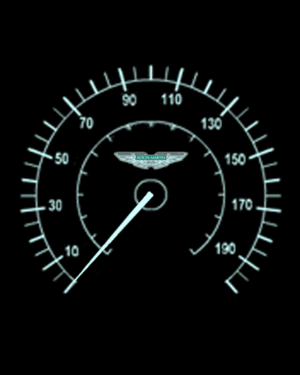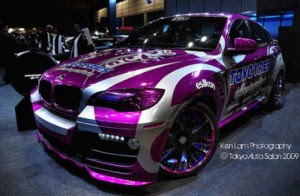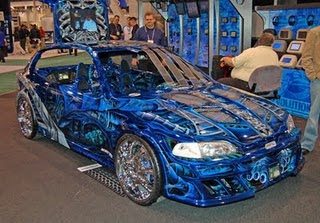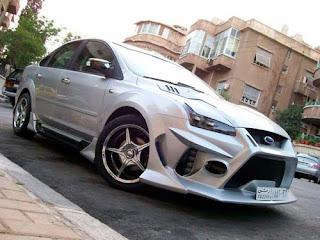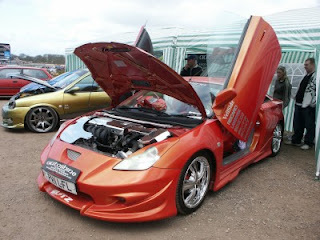Saturday, December 8, 2012
0
Saturday, December 8, 2012
Unknown
Toyota Supra
Someone should tell this Toyota Supra owner that smoke is supposed to come out of the back of your car.
It’s a new age for Dragon Wagon (an obscure Opie & Anthony
reference) with this supped up Toyota Supra and an interesting take on
nitrous purge valves, by giving this side panel beast a little extra
attitude.

Thanks to Jalopnik for the pic!
Read more...

Thanks to Jalopnik for the pic!
0
Unknown
Originally patented by a German, Otto Schulze on 7 October 1902,[2] it uses a rotating flexible cable usually driven by gearing linked to the output of the vehicle's transmission. The early Volkswagen Beetle and many motorcycles, however, use a cable driven from a front wheel.
When the car or motorcycle is in motion, a speedometer gear assembly will turn a speedometer cable which then turns the speedometer mechanism itself. A small permanent magnet affixed to the speedometer cable interacts with a small aluminum cup (called a speedcup) attached to the shaft of the pointer on the analogue speedometer instrument. As the magnet rotates near the cup, the changing magnetic field produces eddy currents in the cup, which themselves produce another magnetic field. The effect is that the magnet exerts a torque on the cup, "dragging" it, and thus the speedometer pointer, in the direction of its rotation with no mechanical connection between them.[1]
The pointer shaft is held toward zero by a fine torsion spring. The torque on the cup increases with the speed of rotation of the magnet (which is driven by the car's transmission). Thus an increase in the speed of the car will twist the cup and speedometer pointer against the spring. The cup and pointer will turn until the torque of the eddy currents on the cup is balanced by the opposing torque of the spring, and then stop. Since the torque on the cup is exactly proportional to the car's speed, and the spring's deflection is proportional to the torque, the angle of the pointer is also proportional to the speed. At a given speed the pointer will remain motionless and pointing to the appropriate number on the speedometer's dial.
The return spring is calibrated such that a given revolution speed of the cable corresponds to a specific speed indication on the speedometer. This calibration must take into account several factors, including ratios of the tailshaft gears that drive the flexible cable, the final drive ratio in the differential, and the diameter of the driven tires.
Read more...
modern speedometer
Eddy current
The eddy current speedometer has been used for over a century and is still in widespread use. Until the 1980s and the appearance of electronic speedometers it was the only type commonly used.Originally patented by a German, Otto Schulze on 7 October 1902,[2] it uses a rotating flexible cable usually driven by gearing linked to the output of the vehicle's transmission. The early Volkswagen Beetle and many motorcycles, however, use a cable driven from a front wheel.
When the car or motorcycle is in motion, a speedometer gear assembly will turn a speedometer cable which then turns the speedometer mechanism itself. A small permanent magnet affixed to the speedometer cable interacts with a small aluminum cup (called a speedcup) attached to the shaft of the pointer on the analogue speedometer instrument. As the magnet rotates near the cup, the changing magnetic field produces eddy currents in the cup, which themselves produce another magnetic field. The effect is that the magnet exerts a torque on the cup, "dragging" it, and thus the speedometer pointer, in the direction of its rotation with no mechanical connection between them.[1]
The pointer shaft is held toward zero by a fine torsion spring. The torque on the cup increases with the speed of rotation of the magnet (which is driven by the car's transmission). Thus an increase in the speed of the car will twist the cup and speedometer pointer against the spring. The cup and pointer will turn until the torque of the eddy currents on the cup is balanced by the opposing torque of the spring, and then stop. Since the torque on the cup is exactly proportional to the car's speed, and the spring's deflection is proportional to the torque, the angle of the pointer is also proportional to the speed. At a given speed the pointer will remain motionless and pointing to the appropriate number on the speedometer's dial.
The return spring is calibrated such that a given revolution speed of the cable corresponds to a specific speed indication on the speedometer. This calibration must take into account several factors, including ratios of the tailshaft gears that drive the flexible cable, the final drive ratio in the differential, and the diameter of the driven tires.
0
Unknown
Originally patented by a German, Otto Schulze on 7 October 1902,[2] it uses a rotating flexible cable usually driven by gearing linked to the output of the vehicle's transmission. The early Volkswagen Beetle and many motorcycles, however, use a cable driven from a front wheel.
When the car or motorcycle is in motion, a speedometer gear assembly will turn a speedometer cable which then turns the speedometer mechanism itself. A small permanent magnet affixed to the speedometer cable interacts with a small aluminum cup (called a speedcup) attached to the shaft of the pointer on the analogue speedometer instrument. As the magnet rotates near the cup, the changing magnetic field produces eddy currents in the cup, which themselves produce another magnetic field. The effect is that the magnet exerts a torque on the cup, "dragging" it, and thus the speedometer pointer, in the direction of its rotation with no mechanical connection between them.[1]
The pointer shaft is held toward zero by a fine torsion spring. The torque on the cup increases with the speed of rotation of the magnet (which is driven by the car's transmission). Thus an increase in the speed of the car will twist the cup and speedometer pointer against the spring. The cup and pointer will turn until the torque of the eddy currents on the cup is balanced by the opposing torque of the spring, and then stop. Since the torque on the cup is exactly proportional to the car's speed, and the spring's deflection is proportional to the torque, the angle of the pointer is also proportional to the speed. At a given speed the pointer will remain motionless and pointing to the appropriate number on the speedometer's dial.
The return spring is calibrated such that a given revolution speed of the cable corresponds to a specific speed indication on the speedometer. This calibration must take into account several factors, including ratios of the tailshaft gears that drive the flexible cable, the final drive ratio in the differential, and the diameter of the driven tires.
Read more...
modern speedometer
Eddy current
The eddy current speedometer has been used for over a century and is still in widespread use. Until the 1980s and the appearance of electronic speedometers it was the only type commonly used.Originally patented by a German, Otto Schulze on 7 October 1902,[2] it uses a rotating flexible cable usually driven by gearing linked to the output of the vehicle's transmission. The early Volkswagen Beetle and many motorcycles, however, use a cable driven from a front wheel.
When the car or motorcycle is in motion, a speedometer gear assembly will turn a speedometer cable which then turns the speedometer mechanism itself. A small permanent magnet affixed to the speedometer cable interacts with a small aluminum cup (called a speedcup) attached to the shaft of the pointer on the analogue speedometer instrument. As the magnet rotates near the cup, the changing magnetic field produces eddy currents in the cup, which themselves produce another magnetic field. The effect is that the magnet exerts a torque on the cup, "dragging" it, and thus the speedometer pointer, in the direction of its rotation with no mechanical connection between them.[1]
The pointer shaft is held toward zero by a fine torsion spring. The torque on the cup increases with the speed of rotation of the magnet (which is driven by the car's transmission). Thus an increase in the speed of the car will twist the cup and speedometer pointer against the spring. The cup and pointer will turn until the torque of the eddy currents on the cup is balanced by the opposing torque of the spring, and then stop. Since the torque on the cup is exactly proportional to the car's speed, and the spring's deflection is proportional to the torque, the angle of the pointer is also proportional to the speed. At a given speed the pointer will remain motionless and pointing to the appropriate number on the speedometer's dial.
The return spring is calibrated such that a given revolution speed of the cable corresponds to a specific speed indication on the speedometer. This calibration must take into account several factors, including ratios of the tailshaft gears that drive the flexible cable, the final drive ratio in the differential, and the diameter of the driven tires.
Friday, December 7, 2012
0
Unknown
Read more...
modern modification car
car modification
Car
modifications are loan modifications that help you better afford your
monthly payment. If the idea of a loan modification scares you, then
you'll be relieved to know that many people go through this process and
it helps them fix their credit and avoid repossession.
Car modifications involve
several steps. First, you have to be behind. Lenders don't negotiate
loan modifications with people who are making their payments on time. If
you're keeping up right now but you fear falling behind in the future,
and currently your credit is good, you might choose refinancing or loan
consolidation instead. Or if your car is worth more than you currently
owe on it, you could simply sell it to pay off your loan and purchase a
car that costs less with smaller payments.
But if you are falling behind
and you're having financial difficulties in keeping up with your car
payments, then you're the perfect candidate for car modifications. Your
credit doesn't matter because it's expected that when you're in a
hardship situation you're going to have credit problems. If you try to
refinance with poor credit, you either won't get the refinancing loan or
the interest rate will be higher than you expect making it not worth
your time or money to do so.
If you look for a car loan
modification, your lender will want to see proof that you really are in a
financial mess. If they can look at your financial records and see that
you have plenty of money for the car payment but you're squandering it
away, they're not going to want to grant the modification. They usually
have a limit as to how much extra money is left over each month after
all of your bills and living expenses.
If you have more than that amount left according to their calculations, you may not qualify.
So
before you look into a car loan modification, it's important to really
examine your finances and make sure you can't simply find the money for
the payment in the amount you already earn. The lender will be looking
at this information very carefully, so you want to anticipate that and
make sure you've left no stone unturned
0
Unknown

Some
cars are simply made to be modified. Everything from hatchbacks to
luxury sedans have been altered by its drivers to make them louder,
faster, and a heck of a lot more enjoyable. However, recent EU rules
have put our beloved adjustments under the chopping block, questioning
whether they would pass the MoT. So, after many decades, could this be
the end of the modified car?
Recent reports indicate the bureaucrats in Brussels want certain modified and classic cars to be classified as illegal. According to the Daily Mail, the European commission has proposed an alteration to the MoT which will set rules making any modification an automatic failure. Affecting millions of motorists as well as many small businesses who have spent billions of pounds each year modifying their cars for pleasure or business, the system would identify any alteration made based on specifications at the factory.
In a test that will determine roadworthiness so that “components of the vehicle must comply with characteristics at the time of first registration” it will likely mean that “potentially something as minor as changing the stereo could result in an MoT failure.” This would also mean that even certain cars that are not been updated with safer equipment will ultimately be made illegal.
Commenting on this issue, Vanessa Guyll from AA said that “we don’t want this and we’re very much against it. If every car with a modification was breaking down and having problems then that would be different but they don’t. Most modifications don’t affect a car’s safety. This would affect everything from changing a car’s wheels to fitting a bodykit. No one enjoys taking their car for an MoT but our system is pretty good. It would cost testing stations a lot and there is not much money to be made from an MoT. The plan is ridiculous.”
Similarly, Barry Corners from the Association of Car Enthusiasts noted that “the implications would be massive. It is unbelievable and it seems unworkable. You would need to know every minute detail about every model of car ever made. There would need to be a database for every car otherwise it couldn’t work. You can take an older car like the Jenson Interceptor and have it completely overhauled with modern components for £100,000.” Beyond the issues with the sweeping provisions, there is no database in the UK that specifies what is factory based and what classified as modifications.
Creating quite a stir in the automotive community, members at the UK Independence Party have reported that they’ve been inundated with letters from concerned motorists. Similarly, politicians across the UK have noted that the British people have long been fans of car modification and will certainly fight to stabilize a favoured industry. While the European edict is far from being implemented, if the mere suggestion has caused such uproar, its enactment will produce nothing short of a revolution.
Read more...
modification car
Recent reports indicate the bureaucrats in Brussels want certain modified and classic cars to be classified as illegal. According to the Daily Mail, the European commission has proposed an alteration to the MoT which will set rules making any modification an automatic failure. Affecting millions of motorists as well as many small businesses who have spent billions of pounds each year modifying their cars for pleasure or business, the system would identify any alteration made based on specifications at the factory.
In a test that will determine roadworthiness so that “components of the vehicle must comply with characteristics at the time of first registration” it will likely mean that “potentially something as minor as changing the stereo could result in an MoT failure.” This would also mean that even certain cars that are not been updated with safer equipment will ultimately be made illegal.
Commenting on this issue, Vanessa Guyll from AA said that “we don’t want this and we’re very much against it. If every car with a modification was breaking down and having problems then that would be different but they don’t. Most modifications don’t affect a car’s safety. This would affect everything from changing a car’s wheels to fitting a bodykit. No one enjoys taking their car for an MoT but our system is pretty good. It would cost testing stations a lot and there is not much money to be made from an MoT. The plan is ridiculous.”
Similarly, Barry Corners from the Association of Car Enthusiasts noted that “the implications would be massive. It is unbelievable and it seems unworkable. You would need to know every minute detail about every model of car ever made. There would need to be a database for every car otherwise it couldn’t work. You can take an older car like the Jenson Interceptor and have it completely overhauled with modern components for £100,000.” Beyond the issues with the sweeping provisions, there is no database in the UK that specifies what is factory based and what classified as modifications.
Creating quite a stir in the automotive community, members at the UK Independence Party have reported that they’ve been inundated with letters from concerned motorists. Similarly, politicians across the UK have noted that the British people have long been fans of car modification and will certainly fight to stabilize a favoured industry. While the European edict is far from being implemented, if the mere suggestion has caused such uproar, its enactment will produce nothing short of a revolution.
0
Unknown
modern door car
A door is movable thing or structure use for open and close, In the
all world there are many door designs but we talking about cars doors so
here we have some collection and some kinds of cars doors, Cars door
classified only due to opening style, every door kind have own opening
style. Normally we are using conventional door and it’s also know as
regular door, Expect of regular door style we have other 6 kinds. Every
part of the car is so important because only for one car your car
attraction go down so designer had everything in mind and then make
different parts with different styles. We have some little collection
which is showing you open door cars look. Open door cars really so
attracting and eye-catching.

Read more...

Subscribe to:
Posts (Atom)

